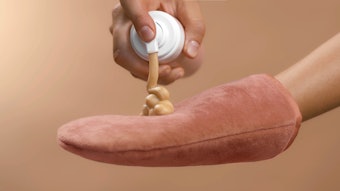
The U.S. Food and Drug Administration (FDA) has announced three new efforts to advance its framework for sun protection products: 1) ensuring accurately promoted/marketed sunscreen benefits; 2) supporting safer and more effective sunscreen innovations, now with Maximal Usage Trials (MUsT); and 3) enforcement guidance for the OTC topicals industry. These efforts are being set forth now, before North American consumers head into the summer sun, and in line with the #DontFryDay sunscreen advocacy drive.
1. Ensuring Sunscreens Deliver Advertised Benefits
According to an FDA statement issued by Scott Gottlieb, M.D., FDA Commissioner, "Consumers should know the products they are using to protect themselves are effective at guarding against harmful UV radiation and safe to use on themselves and their families. Unfortunately, this isn’t always the case.
"We’ve found products purporting to provide protection from the sun that aren’t delivering the advertised benefits. Instead they’re misleading consumers and putting people at risk. Today we sent warning letters to companies illegally marketing pills and capsules labeled as dietary supplements that make unproven drug claims about protecting consumers from the harms that come from sun exposure without meeting the FDA’s standards for safety and effectiveness."
The products, including Advanced Skin Brightening Formula, Sunsafe Rx, Solaricare and Sunergetic, according to the FDA are putting people’s health at risk by giving a false sense of security that a dietary supplement can prevent sunburn, reduce early signs of skin aging or protect against skin cancer; although recent research suggests they could, along with sunscreens, synergistically act to protect skin.
"Today we sent warning letters to companies illegally marketing pills and capsules labeled as dietary supplements that make unproven drug claims." -Gottlieb
"These companies were instructed to correct all violations associated with their products and were advised to review product websites and product labeling to ensure that the claims they are making don’t violate federal law."
2. Safer, More Effective Sunscreens Including Maximal Usage Trials (MUsT)
The FDA also is encouraging industry to continue innovating and researching additional sunscreen actives, and to help answer critical questions about their safety.
"There have been important changes to how sunscreens are used and delivered, including recommendations on use. When sunscreens first came on the market, they were used only occasionally at the beach. Now people are encouraged to use them liberally whenever they are out in the sun. So, our exposure to sunscreens has greatly increased," explained Gottlieb.
At the same time, growing interest has been expressed over whether active ingredients in sunscreens may be absorbed into the skin.
"When sunscreens first came on the U.S. market, sunscreen active ingredients were not thought to penetrate the skin. We now have evidence that it’s possible for some sunscreen active ingredients to be absorbed through the skin. This combination of a large increase in the amount and frequency of sunscreen usage, together with advances in scientific understanding and safety evaluation methods, has given rise to new questions about what information is necessary and available to support general recognition of safety and effectiveness (GRASE) of active ingredients for use in OTC sunscreens."
"A forthcoming proposed rule that we have included in the Unified Agenda will update these regulations with the latest science to help ensure that consumers continue to have access to safe and effective sunscreens." -Gottlieb
As part of the Sunscreen Innovation Act (SIA) enacted in 2014 to provide a new process for the FDA to review the safety and efficacy of sunscreen actives, and as the administration has outlined in the safety and effectiveness guidance for sunscreen active ingredients evaluated under the SIA pathway, a new draft guidance has been issued for the industry regarding Maximal Usage Trials (MUsT) for topically applied active ingredients evaluated for inclusion in an OTC monograph, including for sunscreens.
"This draft guidance, when finalized, will recommend that these studies be conducted to support the inclusion of an active ingredient in an OTC drug monograph. By laying out these principles in draft guidance on how manufacturers can evaluate the absorption characteristics of topically applied active ingredients being considered for inclusion in an OTC monograph, we hope to encourage more product innovation."
3. Enforcement Guidance
Finally, due to the regulatory complexities involved, the FDA also issued guidance to the industry describing its enforcement approach with respect to OTC sunscreen products marketed without approved applications before a final OTC sunscreen monograph becomes effective. In the interim, unless a potential health hazard to the consumer exists, the agency does not intend to object to marketing without an approved application of OTC sunscreen products that have all of the characteristics outlined in the guidance.
"The FDA continues to evaluate scientific issues related to sunscreens as we work to finalize certain regulations concerning nonprescription sunscreen as required by the SIA. A forthcoming proposed rule that we have included in the Unified Agenda will update these regulations with the latest science to help ensure that consumers continue to have access to safe and effective sunscreens.
Consistent with the SIA, the agency also expects to address sunscreen dosage forms and the effectiveness of various SPF values. Through this rulemaking process, the group seeks to balance the needed product innovation with consumer protection based on the latest scientific evidence on these products.
"The FDA’s expectations for safety and effectiveness data for additional sunscreen active ingredients, which are being considered through the SIA process, are also meant to ensure consumers have access to sunscreens that are safe and effective, and are developed in a manner that is consistent with modern scientific thinking concerning safety and effectiveness of sunscreens.
"The upcoming Don’t Fry Day is a good reminder that we need to reduce the risks from harmful UV radiation. Given the recognized public health benefits of sunscreen use, the FDA is committed to finding ways to help bring a wider assortment of safe and effective sunscreen products to the public."










